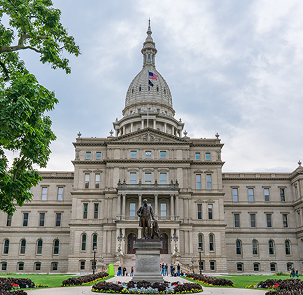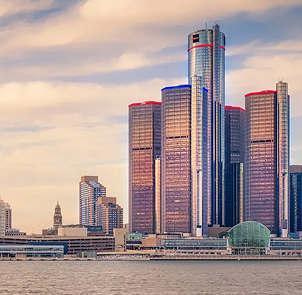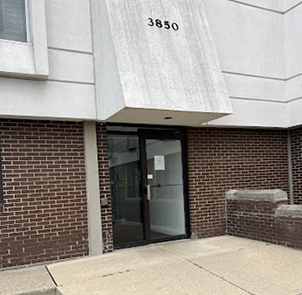- News
- Caught in a Hit-and-Run? Follow These Essential Steps After the Incident
Caught in a Hit-and-Run? Follow These Essential Steps After the Incident

You probably already know that if you get in an automobile accident Michigan law requires you and any other drivers involved in the incident to remain at the crash scene, and to exchange essential information such as your names, insurance providers and policy numbers, home addresses, driver’s license numbers, and car registration information. You’re also required to call law enforcement, and to alert emergency services of any injuries by dialing 911. Believe it or not, under the language of the law, you’re also supposed to help find medical aid and to assist in arranging transportation for any victims as well. (You can generally accomplish those last two tasks simply by making the call to 911, since police officers and EMTs will be summoned to the accident scene as soon as you contact them.)
And what happens if you don’t obey the law? Failing to remain at the location of an accident (in other words, hitting and running) is a misdemeanor punishable by up to 90 days in jail and/or up to a $100 fine (which might not sound like much, but the law was written in 1949 when that was a significantly more valuable chunk of change). But it gets far worse if there are injuries or deaths at the accident scene. If you’re a hit-and-run driver who leaves under these terrible circumstances, you could be charged with a felony and get hit with up to five years in prison and/or a fine up to $5,000. If you’re responsible for the death of someone in a hit-and-run, the prison penalty rises to up to 15 years and the maximum fine doubles to $10,000.
You certainly don’t want that to happen, so just to help you be 100 percent clear on the exact responsibilities you have as a driver after an accident occurs, the state has spelled them out for you in the following decades-old section of the Michigan Vehicle Code:
“The driver of a vehicle who knows or who has reason to believe that he or she has been involved in an accident with an individual or with another vehicle that is operated or attended by another individual shall do all of the following:
(a) Give his or her name and address, and the registration number of the vehicle he or she is operating, including the name and address of the owner, to a police officer, the individual struck, or the driver or occupants of the vehicle with which he or she has collided.
(b) Exhibit his or her operator’s or chauffeur’s license to a police officer, individual struck, or the driver or occupants of the vehicle with which he or she has collided.
(c) Render to any individual injured in the accident reasonable assistance in securing medical aid or arrange for or provide transportation to any injured individual.”
Now That You Know the Law’s Requirements,What Is a Hit-and-Run Accident?
Essentially, a hit-and-run accident is simply an incident where one or more of the drivers involved in the crash choose to leave the scene before exchanging required information with the other driver(s) and awaiting the arrival of law enforcement. Hit-and-runs also happen when someone bumps into a parked car and then fails to report the incident or inform the other vehicle’s owner. If your parked car is damaged in a hit-and-run, don’t hesitate to call the police – use their non-emergency number – and make a formal report. Doing so can be useful for insurance purposes, and officers can often track down the at-fault driver using such tools as traffic cameras or by interviewing eyewitnesses so you can file a “mini-tort” claim or even take the offender to small claims court in an attempt to recover your insurance deductible or other costs.
Why Would Someone Leave the Scene of an Accident?
There are probably a lot of reasons drivers decide to hightail it away from the scene when they’ve been involved in a crash. Most likely, they’re either in a state of shock and the instinctive fight-or-flight response kicks in, or it could be possible they don’t have car insurance or have been involved in some other criminal activities from which they’re fleeing. Despite recent improvements to the state’s car insurance statistics, Michigan still has one of the nation’s highest rates of drivers without coverage. That’s true even though drivers are required by state law to carry a no-fault policy and even though (some deeply flawed) changes to the law – which were intended to help reduce Michigan’s some-of-the-highest-in-the-nation car insurance costs – went into effect a few years back. That’s why it’s a very good idea to be sure your car insurance policy provides you with uninsured motorists protection – just in case you happen to have a run-in with one of the many insurance scofflaws still driving on our state’s highways.
What Should You Do if You’ve Been Hit by Someone Who Flees the Accident Scene?
The first thing to know is that it’s never smart to attempt to prevent someone from leaving, or to follow a driver who’s fleeing an accident. You’re only asking for trouble since you really don’t know what that person might do, and you could cause additional accidents by doing so. Instead, let law enforcement officers handle their job, and concentrate on your own situation. If you or someone in your vehicle have been injured, administer first aid and immediately call 911 for help. In general, you’d follow the same steps we advise accident victims to take after any kind of traffic-related incident, which we’ve outlined in great detail here.
How Does No-Fault Insurance Work in Hit-and-Run Situations?
Since we’re a no-fault state, your own car insurance will cover you for collision damage to your vehicle (you might have to pay your deductible, although some insurers will waive it in hit-and-run situations). Similarly, your own insurance policy’s Personal Injury Protection (PIP) benefits will be available to help make up for lost wages, medical expenses, and related costs you might incur. However, if you’ve chosen anything less than unlimited PIP coverage, you could be in for a rude awakening. That’s because medical bills and hospital charges following an accident can quickly add up, and could easily exceed your PIP benefit limit if you chose a lower cap to save on insurance premiums – something which we warned against in a recent detailed article on that topic.
Can I Sue a Perpetrator of a Hit-and-Run Accident?
If the guilty party has been identified by law enforcement authorities, we can file a lawsuit on your behalf as long as you’ve met the “injury threshold” which is defined by Michigan law. Specifically, it states that you must have experienced “serious impairment of body function or permanent serious disfigurement” before you can take legal action against the perpetrator. Since that description is certainly somewhat subjective, you’d be wise to engage the services of a dedicated personal injury attorney to help you assemble the many types of evidence you’ll need to prove your case in front of a judge and jury. Remember, too, that when you make us your attorneys of record, you will never have to pay a penny out of pocket for legal fees, investigative expenses, filing charges, expert witness costs, or anything else related to your case. Our payment comes only from court-approved settlement funds, and never from your bank account.
What Else Can I Do in This Situation?
We hope you’ll never have to deal with the aftermath of a hit-and-run accident. But if you should happen to become an unfortunate victim of someone’s negligence, you can get us on your side immediately simply by calling 855-MIKE-WINS (855-645-3946) or clicking right here right now. Hit us up, and we promise to do our best to help you receive all the compensation you deserve for the pain and suffering you’ve experienced through no fault of your own.

Content checked by Mike Morse, personal injury attorney with Mike Morse Injury Law Firm. Mike Morse is the founder of Mike Morse Law Firm, the largest personal injury law firm in Michigan. Since being founded in 1995, Mike Morse Law Firm has grown to over 200 employees, served 40,000 clients, and collected more than $1.5 billion for victims of auto, truck and motorcycle accidents. The main office is in Southfield, MI but you can also find us in Detroit, Sterling Heights and many other locations.








